Of India’s underrated cuisines, Tripuri food has varying influences and cannot be replicated with alternate ingredients
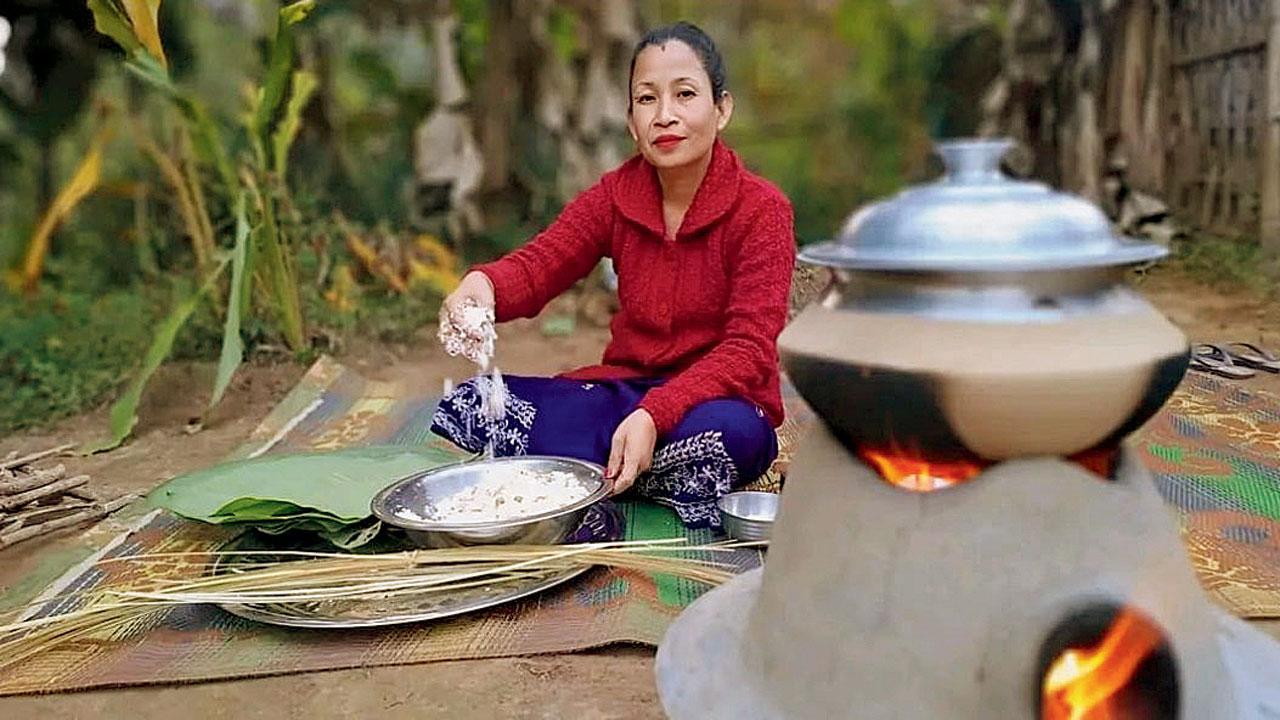
YouTuber Namita Debbarma from Tripura showcases different styles of village recipes and tribal cuisine on her channel
Look up Tripuri cuisine online, and you won’t find anything more than the usual copy-pasted pages on websites, echoing the same information alongside a handful of bloggers trying to document the cuisine. Tripuri cuisine is a culinary wilderness that needs to be represented more in mainland India. Chef Shemphang Khonglah, lecturer at IIHM (International Institute of Hotel Management), Shillong, explains, “That’s true of many cuisines of the North East and more so of Tripura, perhaps because there isn’t an IIHM there. I also feel it is important to include the cuisines of the North East in the syllabus at hotel management colleges to make it more inclusive. We have chefs from here who can make the meanest Kashmiri dum aloo or Bihari litti chokha, but they aren’t making dishes from their hometown for the masses, so that must change.”
ADVERTISEMENT
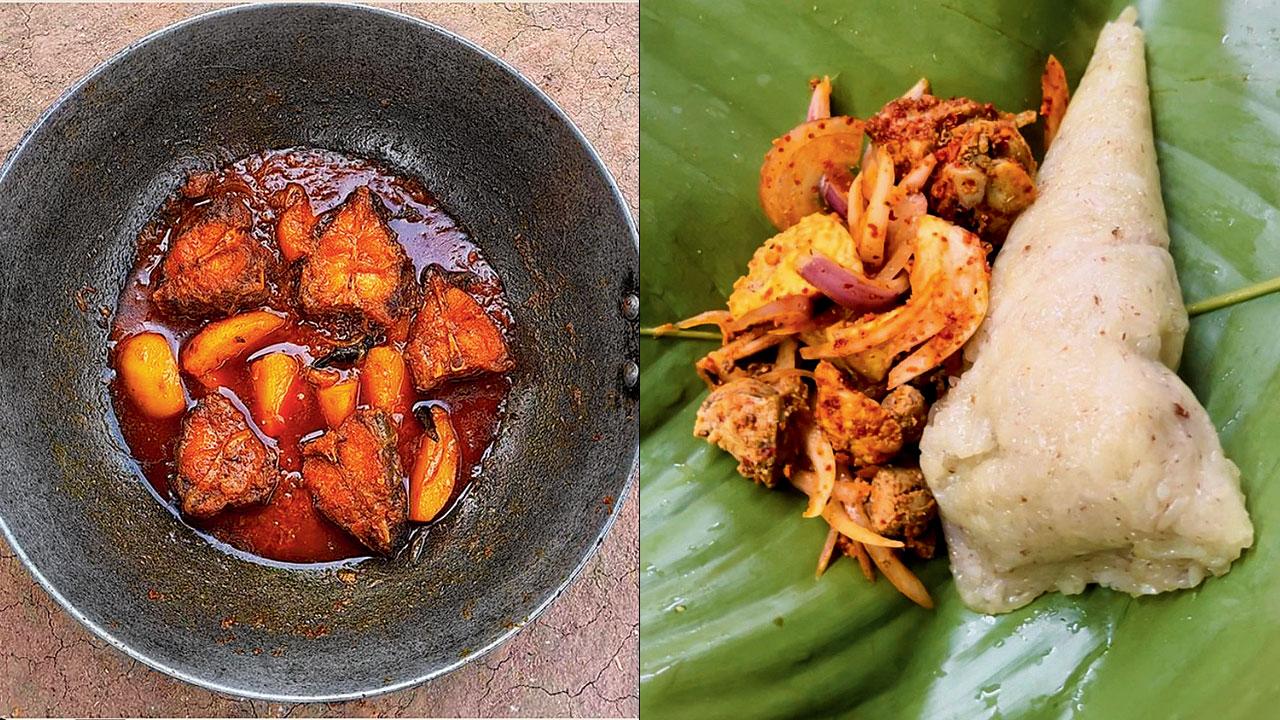
Spicy fish curry and Angui and Bharta
Recognised as an independent state in 1972, most people are ethnically, linguistically and culturally of Tibeto-Burmese origin, and their cuisine is similar to Burmese cooking with minor influences from Cambodia. Unlike other states, their royal cuisine isn’t too different from the food of the masses. This can be credited to the state’s lack of a caste system. Journalist-turned-politician Pradyot Manikya Debbarma, scion of the erstwhile Tripura royal family, is famous for his culinary fascination and love for bhaat (a sticky rice variety) along with wahan mos deng, a pork dish cooked with ginger, onions and mustard oil. The cultural significance of Tripuri cuisine lies in its ability to bridge the gap between the royal and common folk, reflecting the state’s egalitarian values.
Sunday mid-day reached out to Namita Debbarma, a YouTuber from Khowai, a city on the banks of river Khowai. On her channel, Namita’s Rural Cooking, she showcases different village recipes and traditional dishes, especially tribal cuisine. “Cooking is one of the greatest gifts you can give to those you love,” says Debbarma, adding, “Our cuisine reflects the organic lifestyle and evolving cultural trend timed with jhum cultivation (shifting cultivation), an indigenous practice where the tribal farmers of hilly regions cultivate a crop of land temporarily, and then give it up to natural forestation, moving on to another plot. Our cuisine prepares the fish found in the many rivers and lakes of the state, in different ways—smoked, dried, or cooked with different spices and herbs like turmeric and chillies. One of our most popular dishes is mui borok )smoked fish and vegetables), chak-hao kheer (black rice pudding), and bamboo shoots fry.”
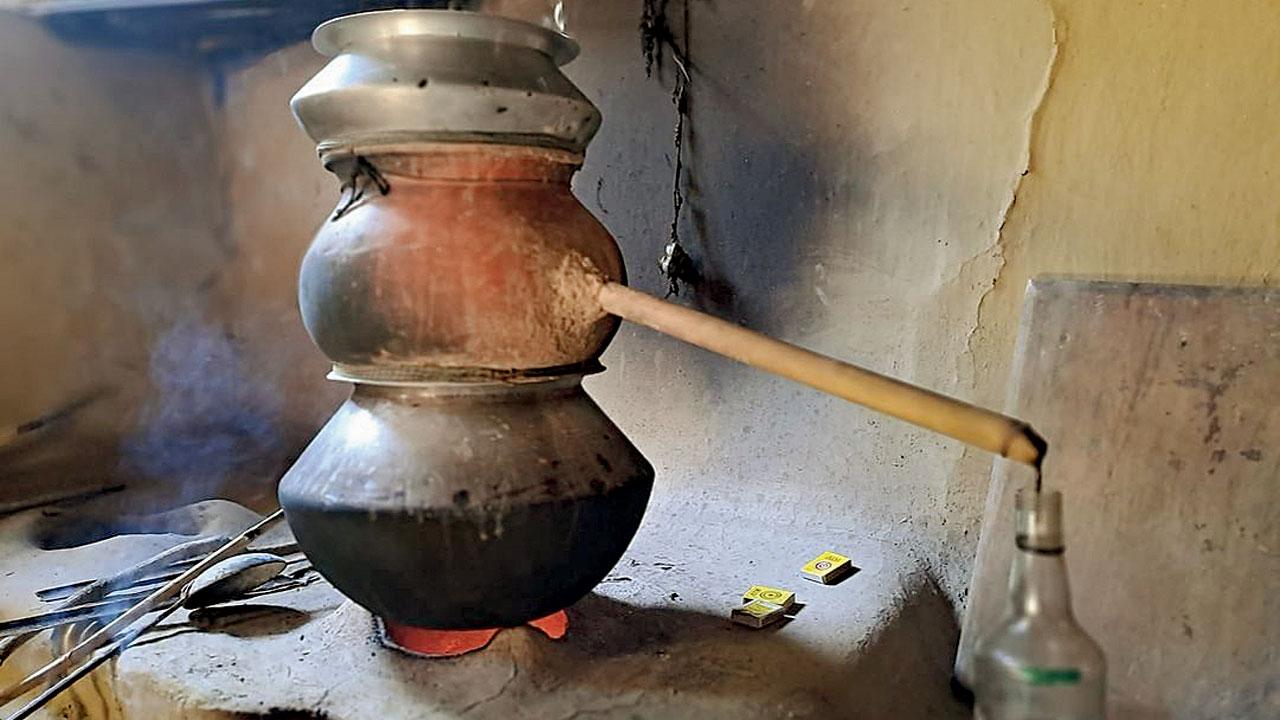
Tripuri Rice Brew
While there are several similarities between Tripuri cuisine and other northeastern cuisines, the former is primarily mild in flavour, not very spicy, and has a generous use of ginger and garlic. “Tripuri tribal communities use a variety of fermented fish and vegetables, which brings an umami flavour, a distinct quintessentially Tripuri taste. Tripura borders Bangladesh, from where we get our supply of fermented fish. We use banana flowers—leaves and stems—in various stews, curries, and even fritters. Muya awandru that contains bamboo shoots, rice flour, and berma (fermented fish) is also very popular.
Debbarma thinks that the limited availability of local ingredients, lack of awareness, cultural differences, and geographical isolation are the reasons Tripuri cuisine is not revered across India. “For a state still in the process of reclaiming its rich history and customs, sadly, our people are not so keen on sharing awareness about the cuisine through social media, and that restricts information.”

Diptanu Sarkar
Diptanu Sarkar, a B.Tech student from Agartala and a passionate food blogger, shares Tripuri recipes on Instagram. “Our food is very organic,” he says, “we use only local vegetables, herbs, and spices, and not too many condiments. We let the produce shine. Several cuisines influence Tripuri cuisine, including Bengali, Assamese and Bangladeshi. Migrants from East Bengal have co-existed with the local people, lending the occasional use of dals and spices and local fish such as catfish, koi, and pool barb tilapia. Different types of edible bamboo—wathwi, barak, muli bamboo and wandal—grow in our backyards. Their young, tender shoots are very high in nutrition, and they add more food value if cooked with other protein supplements, so they are staple.”
He says the cuisine relies heavily on the state’s rich floral diversity, where edible plants grow wild. Since recipes rely so heavily on local ingredients, it isn’t easy to recreate the flavours outside the state. “Our food is an acquired taste and may not be for everyone,” he adds. “Since everything has berma [fermented or dried fish], there aren’t many vegetarian options either. It’s disheartening but not surprising that not many know where Tripura is situated—it is geographically a remote area.”
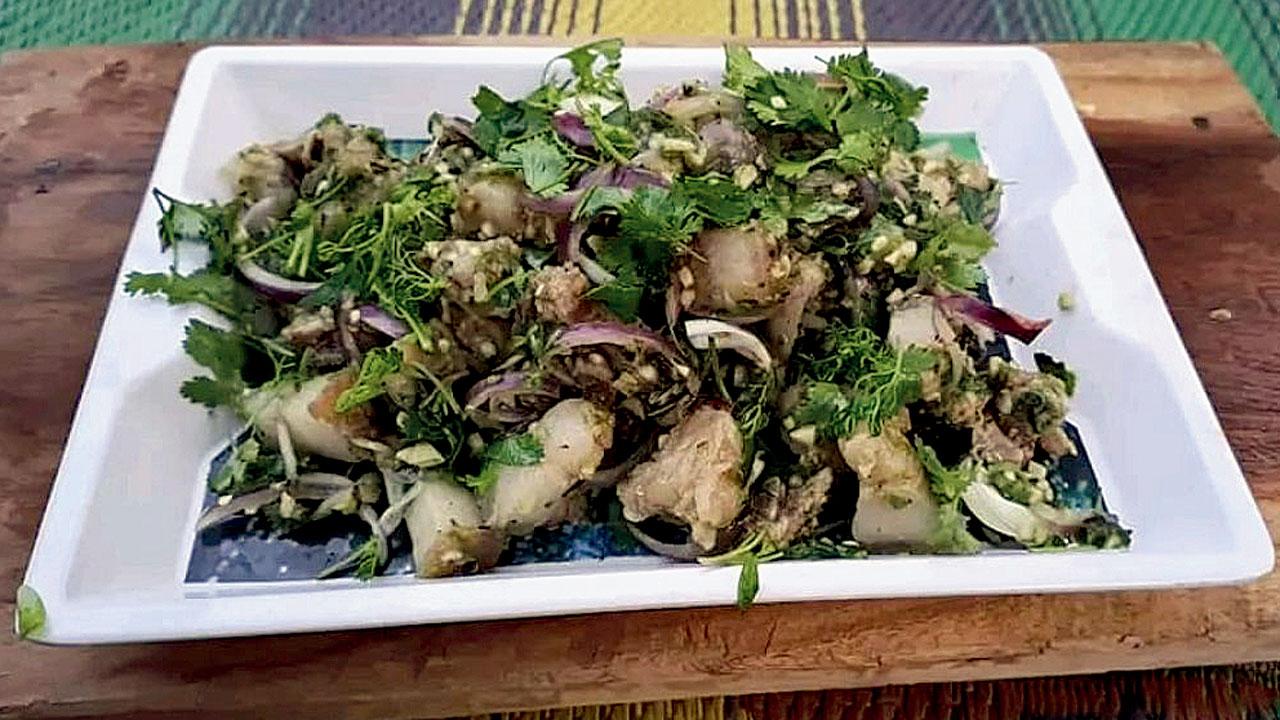
Pork salad
Rice, especially sticky red variety, is a staple found in various forms—steamed, cake, and flour. Pork is a popular choice of meat, and pork rearing has been a common household practice for years. You’ll find a lot of pork curry, pork bharta, and pork barbecue. Sarkar tells us about berma, an irreplaceable ingredient in Tripuri cuisine. “Berma paste is made from fermented or dried fish and adds a unique flavour,” he says. Everyday meals include berma bwtwi (moringa leaves stew with fermented fish), gudok (a vegetable mash with berma, quite like Manipuri Eromba), mosodeng (pork and roasted chilli salad), muya gudok (bamboo shoots and fermented fish), muya awandru (bamboo shoots, rice flour and berma), mui borok (smoked fish and local vegetables) and soboi bwtwi (beans, berma, green chillis). Awan
bangwi (special cake made using lairu/banana leaves) and awan songran (steamed sticky rice) are made occasionally, as desert.
For special meals, there is mosdeng made with boiled chicken or pork, paired with smoked green chilli, ginger and onion; spicy fish curry and country chicken curry. These are preferred with bangwi, rice cones made with aromatic sticky rice that is filled in lairu or banana leaves and steamed to perfection.
Awan bangwi
Steamed sticky rice cones
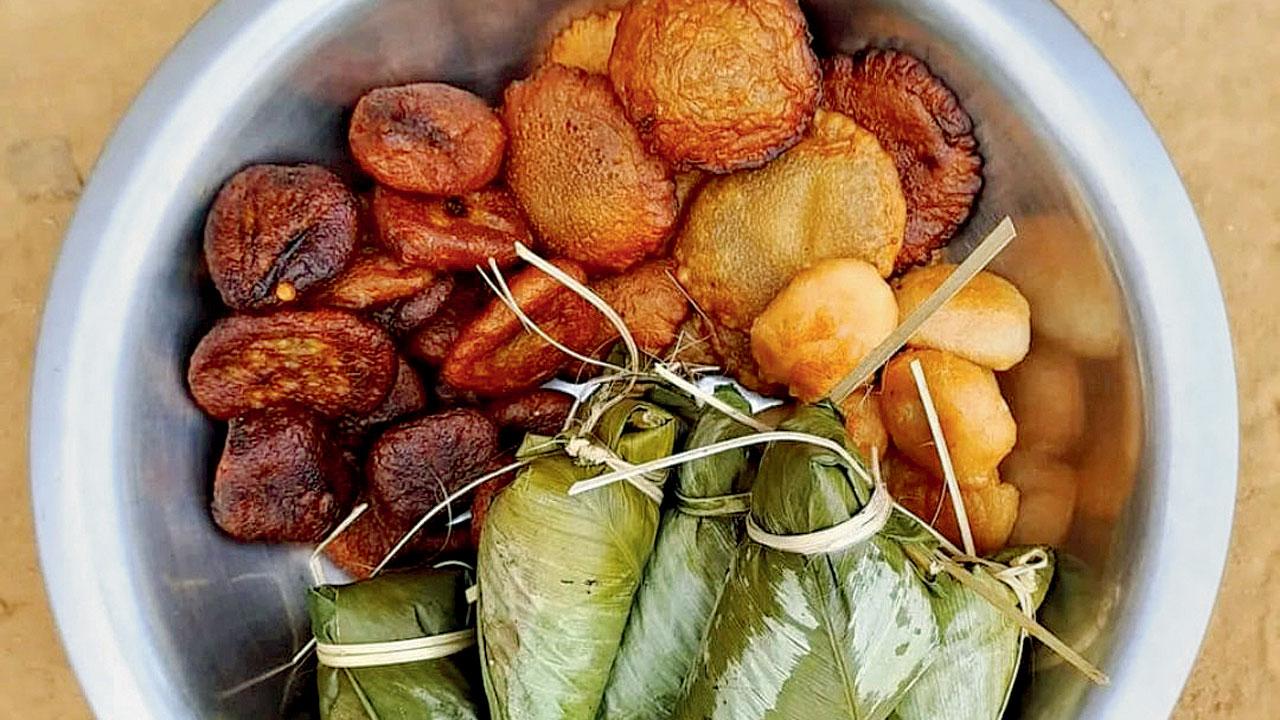
INGREDIENTS
1 kg sticky rice
Salt as required
3 medium onion
1.5-inch ginge
Half coconut
4 tbsp ghee
1 carrot (optional)
150 gm green peas (optional)
15 gm raisins
20 gm cashews
A few lairu or banana Leaves
Some bamboo fibre to wrap and tie
METHOD
Soak the rice for 4-5 hours in water. Mix in chopped ginger and halved cashews with rice. Add ghee and give it a good mix. Add the optional ingredients. Take one leaf of lairu and make a cone, keeping the leaf’s end part inside. With the help of a spoon, pour mixed rice into a cone and fill 4/5 of the cone. Fold down the upper end of the leaf and tie around it with bamboo fibre. Cover and boil it in a big container until cooked, draining the water out. Then peel off the leaves and serve the bangwi warm or hot. Additionally, you can roast the cooked bangwi on a grill till it turns light brown, and then peel off the leaves to serve hot.
Tohan mosdeng
Chicken bharta
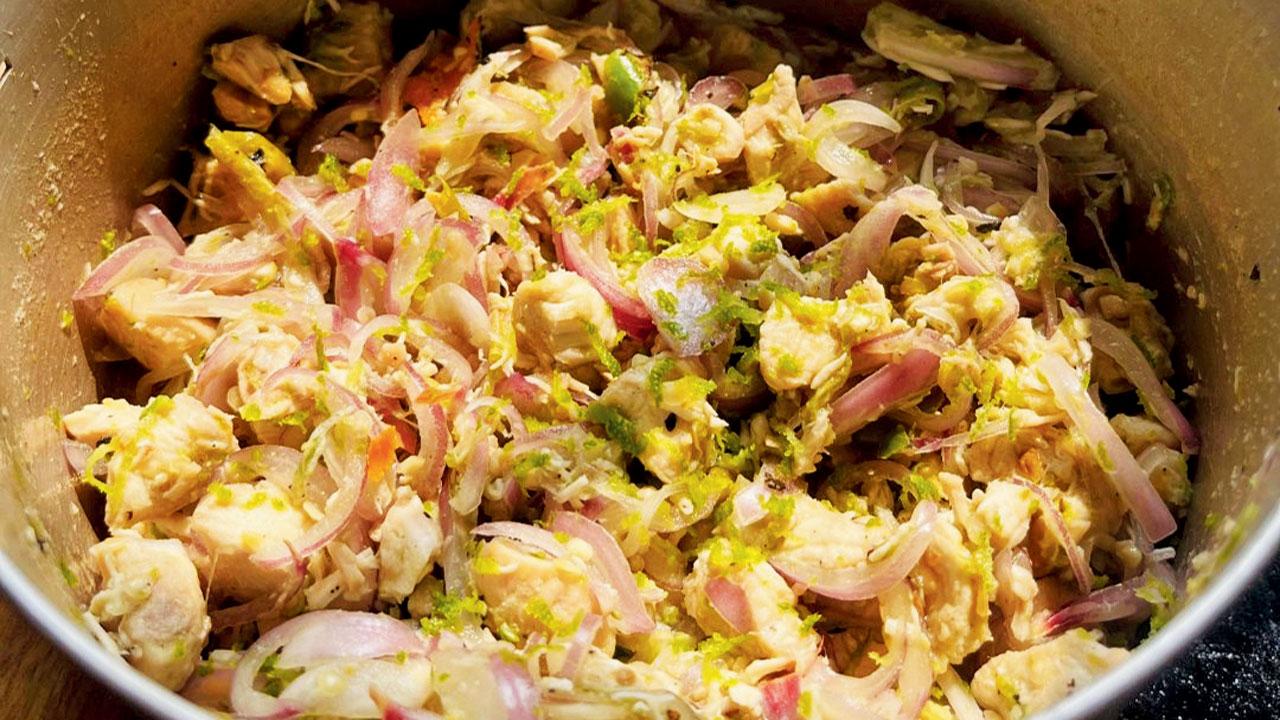
Ingredients
500 gms boneless chicken in small cube
1 inch ginger
4 green chillies
1 onion, sliced
Lemon zest
Corriander
Method
Boil chicken with ginger and salt on high flame for 20 minutes. Smoke 4-5 green chillies on an open flame, add chopped ginger, and salt in a mortar and pestle and make a fine paste. Add this to the boiled chicken along with the sliced onion. Mix well, garnish with chopped coriander, and add grated lemon zest.
Mulai shikamuk awandru
Radish snails with fermented fish and rice flour
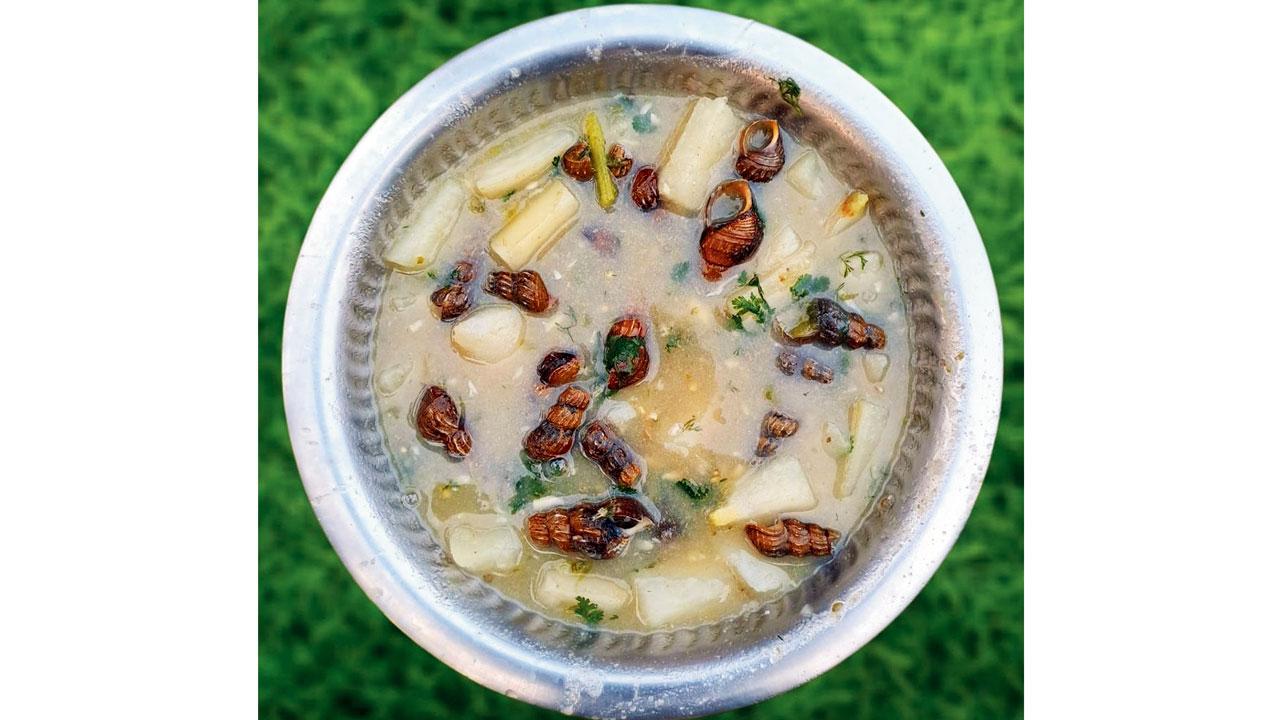
INGREDIENTS
1 kg radish
500 gm snails
6-7 fermented fish
10 to 15 green chillies
3 tbsp rice flour
Salt to taste
A few parsley leaves for garnish
METHOD
Boil the thinly sliced bamboo shoots in a cooking pot for 15-20 minutes. Drain, then boil again, along with the finely washed snails and all the other ingredients. Cook for 20 minutes. Then, add the rice flour paste, stirring continuously to avoid lumps. Cook for another five minutes until you attain a slightly thick gravy. Garnish with parsley leaves. Serve it hot.
Chak hao kheer
Black rice pudding
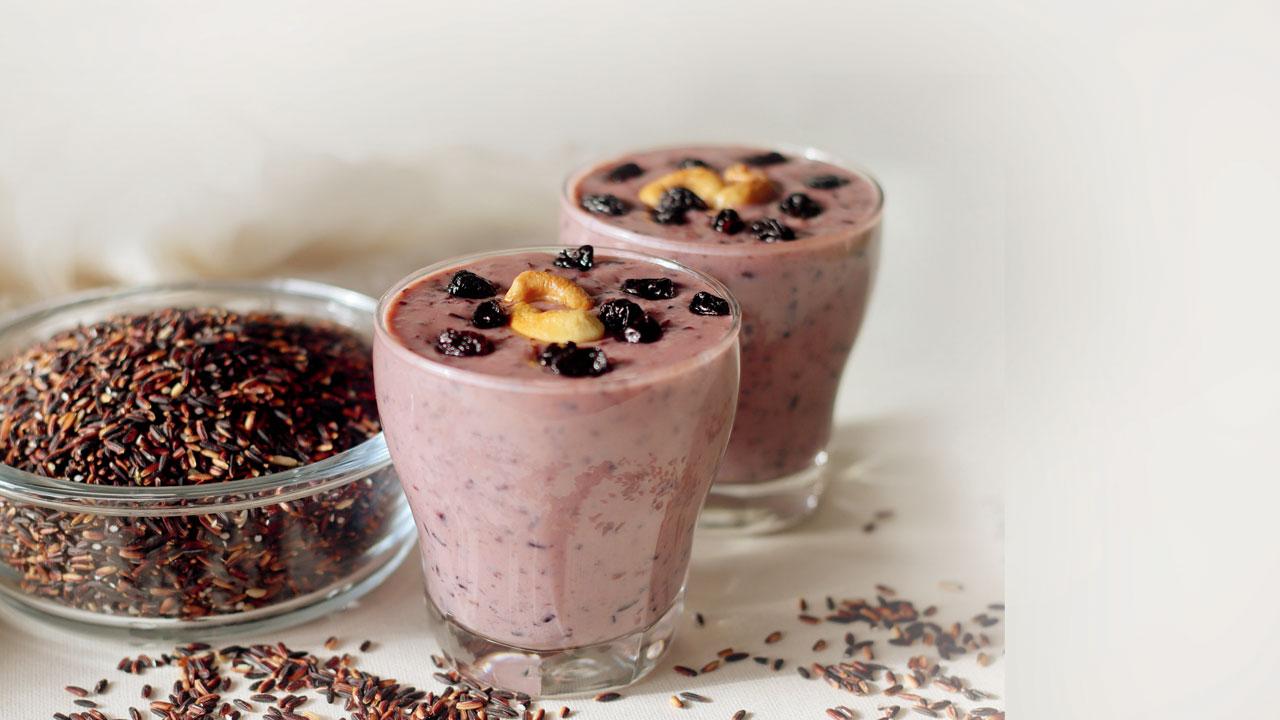
INGREDIENTS
400 gms black rice
2 cups milk
3 cardamom
2 bay leaf
1 cinnamon
3/4 cup sugar
2tbsp coconut pulp
METHOD
Soak black rice for 15 minutes. Boil milk until it is reduced to half. Add the water from the soaked rice, cardamom, bay leaf, and cinnamon and mix. Add chopped coconut pulp and sugar. Then add the soaked rice. Boil until the rice is finely cooked. Garnish with dry fruits, nuts, and raisins.
 Subscribe today by clicking the link and stay updated with the latest news!" Click here!
Subscribe today by clicking the link and stay updated with the latest news!" Click here!







